Refik Anadol: painting with data, dreaming with vvvv
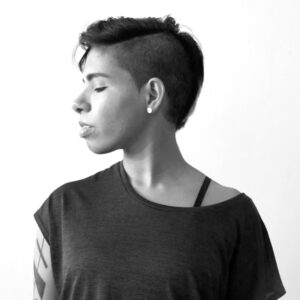
Author: Harshini Karunaratne
In 2008, an art student in Istanbul was asking himself a simple but impossible question: What can I do differently as an artist? Seventeen years later, Refik Anadol’s answer covers entire buildings, museums, and even the dreams of artificial intelligence.
Today, Anadol is one of the most recognisable names in new media art. His large-scale, data-driven installations are shown around the world. But the story of how his practice began, how it became a world of “data paintings,” “machine dreams,” and immersive AI landscapes, starts with a piece of software born in Germany called vvvv.
In my role at the NODE Institute, I got to have a conversation with Anadol, as he joins The NODE Institute this year as an Ambassador for vvvv Programs. We spoke about his 17-year relationship with the visual programming language vvvv, the ethics of machine-human collaboration, and how art can serve as a bridge between technology, science, and nature.

“In 2008, I was in the last six months of my undergrad,” Anadol recalls. “I was contemplating, what am I doing next? Then I came to Berlin for a media architecture event and heard a talk by Lev Manovich on the poetics of augmented space. He said that when artists and architects connect, they can make the invisible visible. They can take data or anything else, and give them shape, form structure, poetics and politics. I loved that. I started to think, what can I do differently that is beyond exploring beauty?”
That same year, back in Istanbul, Anadol began projection-mapping the façade of a contemporary art museum. It was there he met Sebastian Neitsch, an artist and coder who introduced him to vvvv, a node-based visual programming environment built for real-time motion graphics, data, and interaction.
“Before that I used Pure Data, a very OG visual programming language,” he says. “I could connect an ultrasound sensor, make some sonification, do some geometric transformations. But when I discovered vvvv, something clicked. I started to use it for video mapping with a one-channel, super-simple patch. Sebastian built many parts of the system, I animated other parts. And since then, I’ve never stopped. It’s now been almost seventeen years.”

For Anadol, vvvv became more than a tool; it became a way of thinking.
“When I think about complex systems, like at Guggenheim Bilbao where we connected 50 projectors or at MoMA where we let the building dream its 112-year archive, I don’t see limits. I don’t have a limit of nodes or sensors. I feel like I am the limit; the tool isn’t. vvvv is a thinking brush, an extension of imagination.”
That imagination has produced some of the most ambitious media installations of the 21st century. When I moved to Berlin in the fall of 2021, his exhibition at the König Galerie titled “Machine Hallucinations” was unlike anything I had seen before. Digital art was a spatial and sensorial experience, transforming the brutalist interior of a former church into a living dream of data.
“[König Galerie] is an incredibly void, brutalist architecture with fascinating acoustics…. I thought, what if we take out everything? No painting, no sculpture, just one piece? Then use the acoustics and put high-dreaming nature sounds here. If this machine can dream while we’re inside it, maybe we can unlock a new feeling.”

“Machine Hallucinations” was a beautiful example of where media art and spirituality meet. It’s a work that goes beyond the screen, and where sharing in the collective experience becomes transcendental.
Envisioning the permanence of digital art
It is hard to believe that it is already two years since a work by Anadol, “Unsupervised – Machine Hallucinations” which drew on MoMa’s own archive, was acquired by the museum for their permanent collection. As a curator in new media myself, this felt like a huge step forward to signal that yes, digital art can have a place in permanence. While Anadol’s practice thrives on generative systems, it is grounded in the belief that digital art can last.
“We have a work that’s been running since 2014, literally the same patch,” he shares. “People assume digital art lasts a few months, maybe a year before you have to change it and I say, no we can do so much better. We have a collector very proudly saying, ‘It’s been eleven years and the artwork is still running.’ That’s reliability. That’s trust. And I think, if the collector has a vision for the future, this can live more than me and you. We can design a system that can run longer than us.”
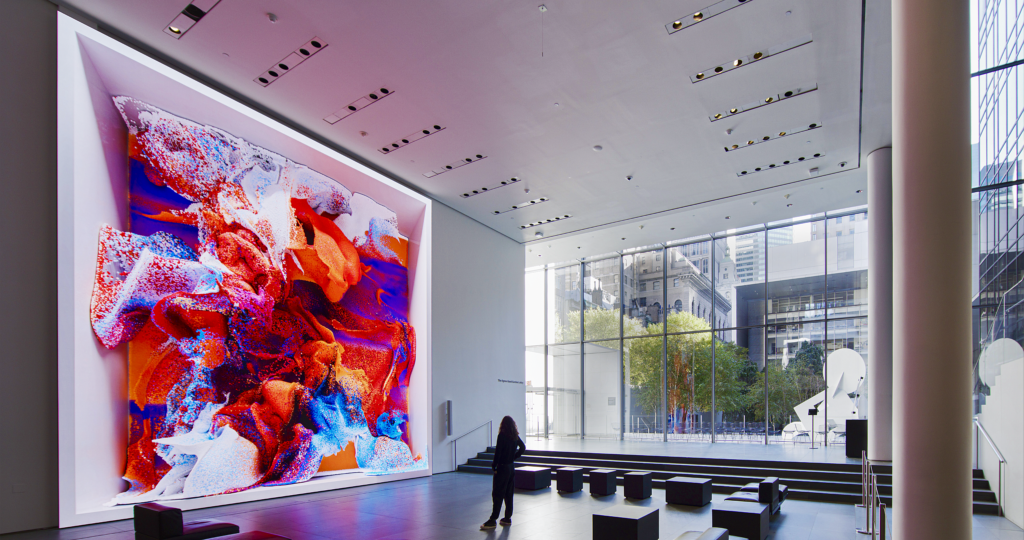
That reliability, he insists, comes from the community around vvvv, the developers and users who continuously build and push what is possible.
“Shout out to the devs like Joreg and Gregor. We’ve worked on many monster challenges together. The work we’ve done across the years isn’t egocentric, it’s teamwork. Behind these libraries, logics, and workshops, there’s a lot of thinking together.”
Anadol credits many vvvv artists and developers, including Seb Escudi, Christian Riekoff, Luna Nane, Tebjan Halm, and Kyle McLean who has been dreaming with Anadol through the years.
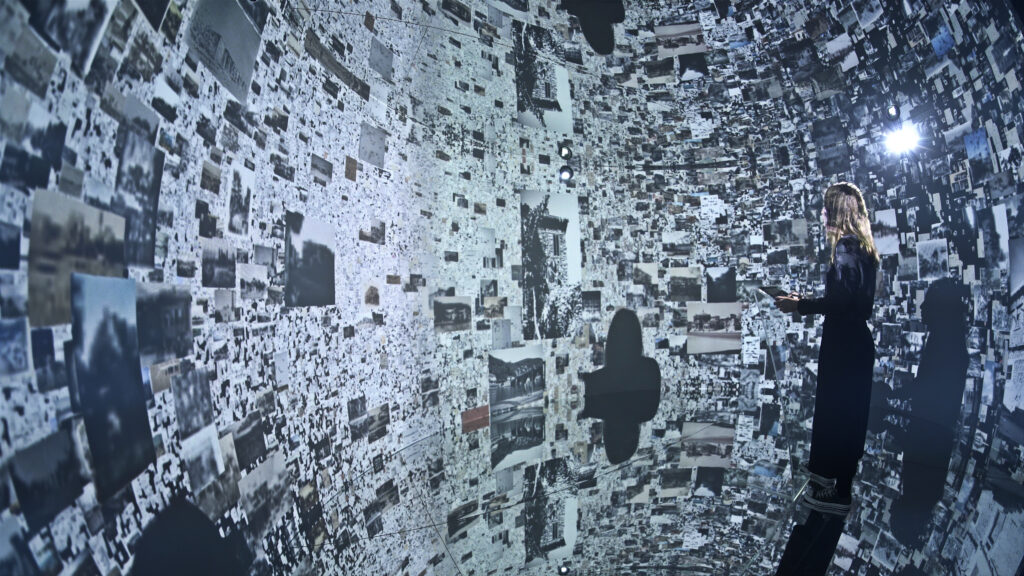
The dream of Dataland and a new era of “generative reality”
That spirit of collaboration is now shaping Anadol’s most ambitious project yet: Dataland, the world’s first museum dedicated to AI arts.
“Huge respect to institutions like MoMA or Guggenheim, but these institutions are really focused on a large number of artworks and artists and they aren’t focused on what is coming next,” he says. “My partner Efsun and I asked, how can we contribute to humanity?What will be the place where we can create and respond to challenges? This is how the dream of Dataland began.”
Building Dataland cannot happen alone. Together with the developers behind vvvv, they formed a team of vvvv-driven artists and developers – whom I like to affectionately call the vvvv All Stars – and have been working tirelessly to see Dataland open its doors in Los Angeles in Spring 2026.
“We’ve been developing systems, logics, techniques for 18 months,” Anadol says. “vvvv sits at the core, connecting servers, projectors, LEDs, sensors.”

For Anadol, Dataland also signals a philosophical shift and reflects on the current situation with AI.
“What is going on right now with AI, is a very challenging situation because people are questioning, really questioning, creativity, ethics, privacy, free will… This is a very unique place. And I’m calling this, Generative Reality,” he explains.
AR, VR, XR are limited. They all need some sort of machine, a tool, device or lens to see and feel. But what is happening with AI is most likely something beyond that. It is allowing us to feel things that are not real, but maybe real. It doesn’t need a screen. It’s intellectual, in our memories, enhancing cognitive skills. So I’m hoping that with this project we are saying that this is a new era of imagination and technology, and one centered on the discourse of what is ethically and right for nature. We can find this new medium with the people through machine-human collaboration, not a lazy one saying, oh, here’s an AI that does everything. It’s a truly human-machine collaboration.
The Winds of Yawanawa: Where indigenous knowledge and AI meet
That philosophy and imagination also extends beyond the gallery. I wanted to make sure that I didn’t miss the chance to ask Anadol about one particular project: “Winds of Yawanawa.” His face immediately lights up with a big smile once I mention it. In “Winds of Yawanawa,” Anadol collaborated with the Yawanawa tribe of the Amazon, channeling weather data, AI, and indigenous painting traditions into a living digital artwork.
“My life changed when I met Chief Nixivaca and the Yawanawa tribe four years ago,” he recalls. “The Yawanawa people are only 1000 people. These are literally people protecting nature. Like they’re the one hosting them, hosting themselves in the forest, in the lungs of humanity, Amazonia. I have such an appreciation for them, and their way of living. I asked, what is your dream? The Chief said, to bring all the Amazonian leaders together. They needed infrastructure: solar power, internet, buildings…. We decided to make an artwork that could help fund that.”


Anadol reflects on the moment he shares the work he and his team create with Chief Nixivaca.
“I’m obsessed with particles. I’m obsessed with fluid dynamics, and I showed all this and they felt like it was so similar to their dreams when they are in a spiritual state. Huge connection and an incredible feeling. I said, okay, then why don’t we work together and imagine a collection?”
Two young Yawanawa artists, Muca (14) and Nava (24), painted twelve original works that, with their permission, Anadol’s team then combined with AI and live environmental data using vvvv’s Fuse logics.
“We generated a thousand unique pieces,” he says. “It sold for three million dollars, all of which went to the tribe. Now they have a building, a museum, a place to protect knowledge.”
Earlier this year, Chief Nixivaca was able to fulfill his dream and brought together 400 indigenous people, representative of 40 different tribe members from across the world. They sat together and shared in a one week exchange.
Presented at the World Economic Forum in Davos, “Winds of Yawanawa” became a landmark example of how technology, AI, and blockchain can be used ethically to give back. Chief Nixivaca also became the first indigenous leader to ever be recognized on the main stage at Davos.
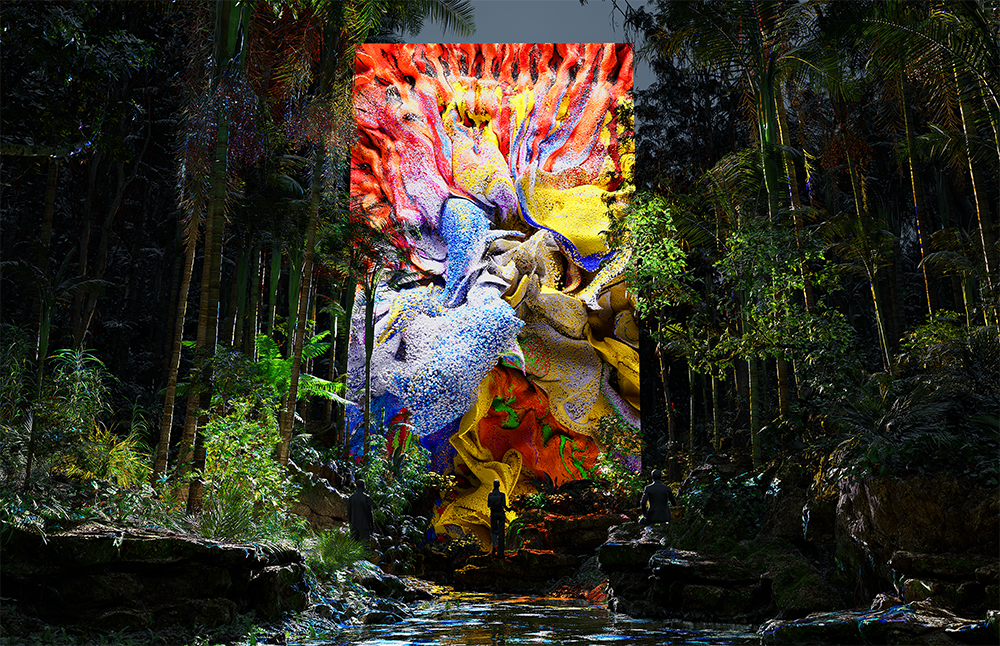
Creative technology leads by connection
As I speak with Anadol, I notice how our conversation may start off or thread through the technical, but it is guided by an overarching purpose. From Istanbul to Berlin, from museum facades to machine dreams, from the Amazon rainforest to the cloud, Anadol’s art keeps returning to one principle: connection.
Having had the chance to get to know the vvvv users in the past couple of years, I’ve been able to see how a tool can become something more.
vvvv is not just a programming language, it’s a community, a medium, and a philosophy that continues to grow with each new project. The patches may evolve, the GPUs may update, but the imagination remains infinite.
“Art, science, and technology blend beautifully,” Anadol says. “Scientists talk through logic. Artists ask about spirituality, emotion, what’s beyond reality. vvvv bridges that; it captures these dialogues. This is the perfect time to imagine possibilities.”
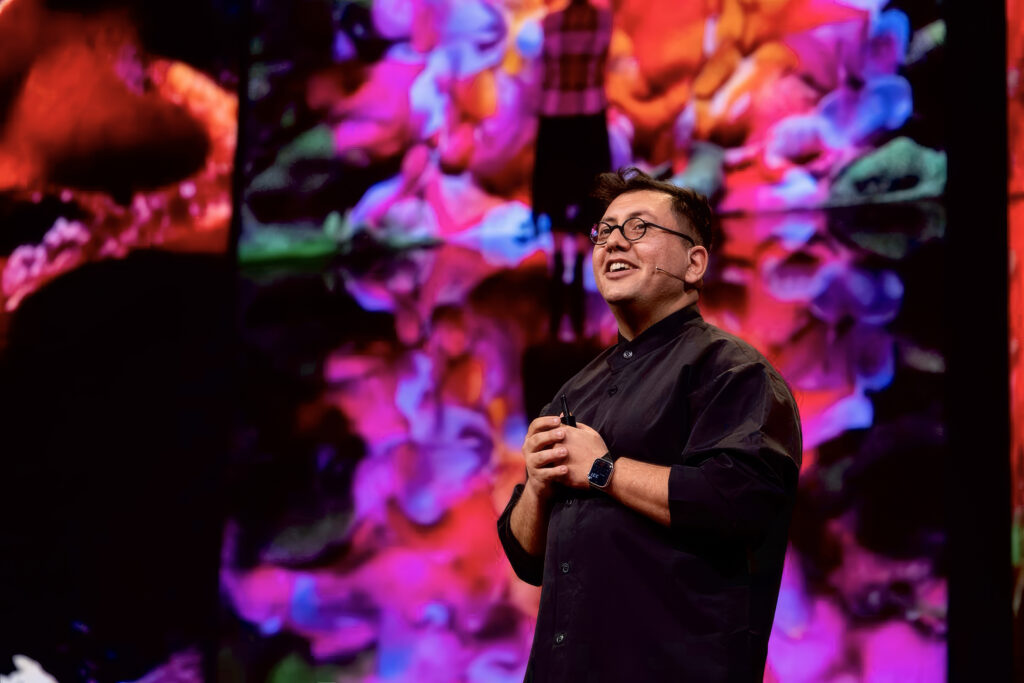
The Winter Season vvvv Beginner Class is still open for enrollment. Take the first steps into your creative computation journey with vvvv. Find out more about the course and enroll here.
This article also mentions Fuse which empowers the Refik Anadol Studio to create mesmerizing installations. Explore the full potential of VL.Fuse, the most advanced open-source library built for GPU-accelerated programming in vvvv gamma, in this 8-part recorded series.

